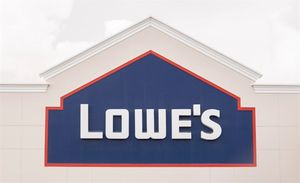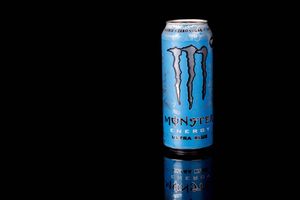Cleveland-Cliffs Inc. (NYSE: CLF) today provided updated financial guidance based on its most recent 2021 financial forecast.
The Company’s forecast includes the following expectations:
- Second-quarter 2021 adjusted EBITDA* of $1.3 billion
- Full-year 2021 adjusted EBITDA* of $5 billion
The full-year expectation is based on current contractual business and the conservative assumption that the US HRC index price averages $1,175 per net ton for the remainder of the year.
The Company will announce its full second-quarter 2021 earnings results before the U.S. market open on Thursday, July 22, 2021.
The Company invites interested parties to listen to a live broadcast of a conference call with securities analysts and institutional investors to discuss the results on July 22, 2021 at 10:00 am ET. The call can be accessed at www.clevelandcliffs.com and will also be archived and available for replay at that address.
* Adjusted EBITDA is a non-GAAP financial measure that management uses in evaluating operating performance. The presentation of this measure is not intended to be considered in isolation from, as a substitute for, or as superior to, the financial information prepared and presented in accordance with U.S. GAAP. The presentation of this measure may be different from non-GAAP financial measures used by other companies. We are unable to reconcile, without unreasonable effort, our expected adjusted EBITDA to its most directly comparable GAAP financial measure, net income, due to the uncertainty and inherent difficulty of predicting the occurrence and the financial impact of items impacting comparability. This includes the finalization of the preliminary allocation of consideration related to the ArcelorMittal USA acquisition to the net tangible and intangible assets acquired and liabilities assumed and associated tax impacts. For the same reasons, we are unable to address the significance of the unavailable information.
About Cleveland-Cliffs Inc.
Cleveland-Cliffs is the largest flat-rolled steel producer in North America. Founded in 1847 as a mine operator, Cliffs also is the largest manufacturer of iron ore pellets in North America. The Company is vertically integrated from mined raw materials and direct reduced iron to primary steelmaking and downstream finishing, stamping, tooling, and tubing. The Company serves a diverse range of markets due to its comprehensive offering of flat-rolled steel products and is the largest steel supplier to the automotive industry in North America. Headquartered in Cleveland, Ohio, Cleveland-Cliffs employs approximately 25,000 people across its mining, steel and downstream manufacturing operations in the United States and Canada. For more information, visit www.clevelandcliffs.com.
Forward-Looking Statements
This release contains statements that constitute "forward-looking statements" within the meaning of the federal securities laws. All statements other than historical facts, including, without limitation, statements regarding our current expectations, estimates and projections about our industry or our businesses, are forward-looking statements. We caution investors that any forward-looking statements are subject to risks and uncertainties that may cause actual results and future trends to differ materially from those matters expressed in or implied by such forward-looking statements. Investors are cautioned not to place undue reliance on forward-looking statements. Among the risks and uncertainties that could cause actual results to differ from those described in forward-looking statements are the following: disruptions to our operations relating to the COVID-19 pandemic, including the heightened risk that a significant portion of our workforce or on-site contractors may suffer illness or otherwise be unable to perform their ordinary work functions; continued volatility of steel and iron ore market prices, which directly and indirectly impact the prices of the products that we sell to our customers; uncertainties associated with the highly competitive and cyclical steel industry and our reliance on the demand for steel from the automotive industry, which has been experiencing a trend toward light weighting that could result in lower steel volumes being consumed; potential weaknesses and uncertainties in global economic conditions, excess global steelmaking capacity, oversupply of iron ore, prevalence of steel imports and reduced market demand, including as a result of the COVID-19 pandemic; severe financial hardship, bankruptcy, temporary or permanent shutdowns or operational challenges, due to the COVID-19 pandemic or otherwise, of one or more of our major customers, including customers in the automotive market, key suppliers or contractors, which, among other adverse effects, could lead to reduced demand for our products, increased difficulty collecting receivables, and customers and/or suppliers asserting force majeure or other reasons for not performing their contractual obligations to us; our ability to return capital to shareholders within the expected timeframe or at all, depending on market and other conditions; risks related to U.S. government actions with respect to Section 232 of the Trade Expansion Act (as amended by the Trade Act of 1974), the United States-Mexico-Canada Agreement and/or other trade agreements, tariffs, treaties or policies, as well as the uncertainty of obtaining and maintaining effective antidumping and countervailing duty orders to counteract the harmful effects of unfairly traded imports; impacts of existing and increasing governmental regulation, including climate change and other environmental regulation that may be proposed under the Biden Administration, and related costs and liabilities, including failure to receive or maintain required operating and environmental permits, approvals, modifications or other authorizations of, or from, any governmental or regulatory authority and costs related to implementing improvements to ensure compliance with regulatory changes, including potential financial assurance requirements; potential impacts to the environment or exposure to hazardous substances resulting from our operations; our ability to maintain adequate liquidity, our level of indebtedness and the availability of capital could limit cash flow necessary to fund working capital, planned capital expenditures, acquisitions, and other general corporate purposes or ongoing needs of our business; adverse changes in credit ratings, interest rates, foreign currency rates and tax laws; limitations on our ability to realize some or all of our deferred tax assets or net operating loss carryforwards; our ability to realize the anticipated synergies and benefits of our acquisitions of AK Steel and ArcelorMittal USA and to successfully integrate the businesses of AK Steel and ArcelorMittal USA into our existing businesses, including uncertainties associated with maintaining relationships with customers, vendors and employees; additional debt we assumed, incurred or issued in connection with the acquisitions of AK Steel and ArcelorMittal USA, as well as additional debt we incurred in connection with enhancing our liquidity during the COVID-19 pandemic, may negatively impact our credit profile and limit our financial flexibility; known and unknown liabilities we assumed in connection with the acquisitions of AK Steel and ArcelorMittal USA, including significant environmental, pension and other postretirement benefits (“OPEB”) obligations; the ability of our customers, joint venture partners and third-party service providers to meet their obligations to us on a timely basis or at all; supply chain disruptions or changes in the cost or quality of energy sources or critical raw materials and supplies, including iron ore, industrial gases, graphite electrodes, scrap, chrome, zinc, coke and coal; liabilities and costs arising in connection with any business decisions to temporarily idle or permanently close a mine or production facility, which could adversely impact the carrying value of associated assets and give rise to impairment charges or closure and reclamation obligations, as well as uncertainties associated with restarting any previously idled mine or production facility; problems or disruptions associated with transporting products to our customers, moving products internally among our facilities or suppliers transporting raw materials to us; uncertainties associated with natural or human-caused disasters, adverse weather conditions, unanticipated geological conditions, critical equipment failures, infectious disease outbreaks, tailings dam failures and other unexpected events; our level of self-insurance and our ability to obtain sufficient third-party insurance to adequately cover potential adverse events and business risks; disruptions in, or failures of, our information technology systems, including those related to cybersecurity; our ability to successfully identify and consummate any strategic investments or development projects, cost-effectively achieve planned production rates or levels, and diversify our product mix and add new customers; our actual economic iron ore and coal reserves or reductions in current mineral estimates, including whether we are able to replace depleted reserves with additional mineral bodies to support the long-term viability of our operations; the outcome of any contractual disputes with our customers, joint venture partners, lessors, or significant energy, raw material or service providers, or any other litigation or arbitration; our ability to maintain our social license to operate with our stakeholders, including by fostering a strong reputation and consistent operational and safety track record; our ability to maintain satisfactory labor relations with unions and employees; availability of workers to fill critical operational positions and potential labor shortages caused by the COVID-19 pandemic, as well as our ability to attract, hire, develop and retain key personnel; unanticipated or higher costs associated with pension and OPEB obligations resulting from changes in the value of plan assets or contribution increases required for unfunded obligations; and potential significant deficiencies or material weaknesses in our internal control over financial reporting.
For additional factors affecting the business of Cliffs, refer to Part I – Item 1A. Risk Factors of our Annual Report on Form 10-K for the year ended December 31, 2020, and other filings with the SEC.
View source version on businesswire.com: https://www.businesswire.com/news/home/20210615005370/en/
Contacts
MEDIA CONTACT:
Patricia Persico
Director, Global Communications
(216) 694-5316
INVESTOR CONTACT:
Paul Finan
Vice President, Investor Relations
(216) 694-6544






